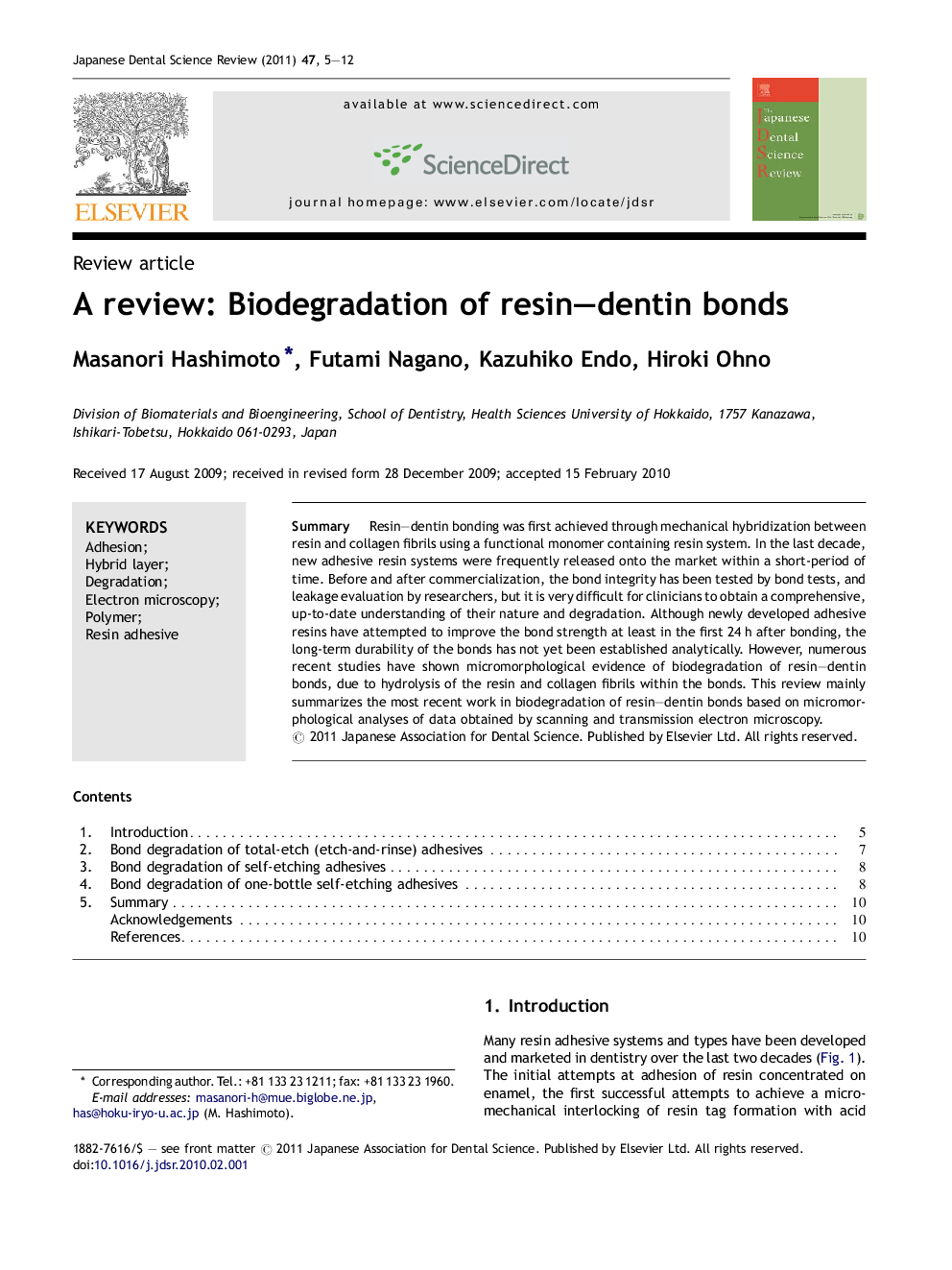| Article ID | Journal | Published Year | Pages | File Type |
|---|---|---|---|---|
| 3136973 | Japanese Dental Science Review | 2011 | 8 Pages |
SummaryResin–dentin bonding was first achieved through mechanical hybridization between resin and collagen fibrils using a functional monomer containing resin system. In the last decade, new adhesive resin systems were frequently released onto the market within a short-period of time. Before and after commercialization, the bond integrity has been tested by bond tests, and leakage evaluation by researchers, but it is very difficult for clinicians to obtain a comprehensive, up-to-date understanding of their nature and degradation. Although newly developed adhesive resins have attempted to improve the bond strength at least in the first 24 h after bonding, the long-term durability of the bonds has not yet been established analytically. However, numerous recent studies have shown micromorphological evidence of biodegradation of resin–dentin bonds, due to hydrolysis of the resin and collagen fibrils within the bonds. This review mainly summarizes the most recent work in biodegradation of resin–dentin bonds based on micromorphological analyses of data obtained by scanning and transmission electron microscopy.
